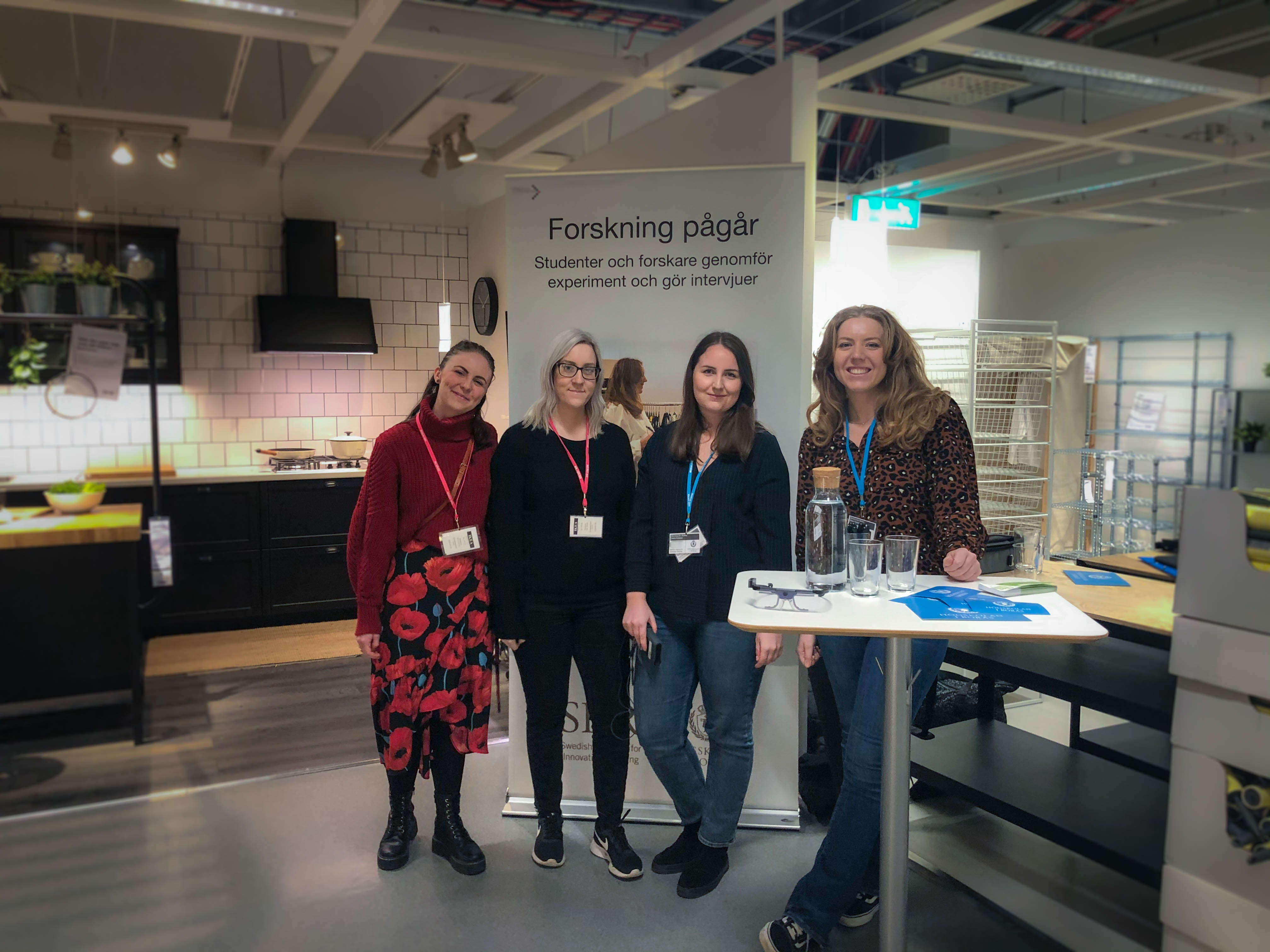Mobile phone usage while shopping at IKEA
2020-09-11
Project details
Summary of the study
We did our study for IKEA, where we investigated how their millennials use their mobile when they buy kitchens at IKEA. We also studied how customers want to be able to use their mobile phones and what IKEA can do to optimise the use in their department stores. We had participants consisting of customers born between the 80’s and 00’s, having to do several assignments in IKEA’s kitchen department while they were wearing eye tracking-glasses. After they finished their assignments, we also followed up with an interview.
The result of the study was that customers use their mobile phones to navigate the department store, search for information and take photos to save for inspiration and information. On the other hand, customers experienced difficulties to find the information they needed in the department store and thus also found it more difficult to search for information on their mobile phones. Therefore, we made the recommendation for IKEA that the information labels must be better adapted for customers’ mobile use and their digital tools must be better adapted because customers use the mobile when they are in the department stores.
The benefits of eye tracking
The main benefit of eye tracking was that we could observe our respondents in a closer and more natural way than we could have done with any other method. Instead of us standing next to and observing the respondents, the respondent could instead move freely in the department store and not be as affected by them being observed. When the observations were made, we also received video files on the recordings where we could clearly see how the respondents moved and what they were watching.
Tips for those interested in using eye tracking
We would say that it is important to do good preliminary work when choosing to use eye tracking. There should be a clear purpose for why this technology should be used in a particular study and that there is a clear structure and plan for how it is to be used and carried out. We also used it for a qualitative study, but we would probably now say that eye tracking can be even more interesting to use for a quantitative study as you can get more measurable values to use.

From left: Julia Gustafsson, Anna Atterfors, Emma Randau, and Frida Tordsson.
Anna Atterfors and Julia Gustafsson




